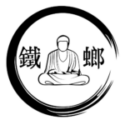The Multifaceted Benefits of Kung Fu Forms: Meditation, Exercise, and Self-Defense
Kung Fu, one of the oldest and most comprehensive martial arts systems in the world, is often misunderstood in today’s world of Mixed Martial Arts (MMA) and fitness-driven martial practices. Kung Fu forms, known as “katas” or “taolu,” hold a unique place in the martial arts spectrum, blending meditation, exercise, and self-defense into a singular practice that fosters holistic development. Let’s explore why Kung Fu forms remain essential in a complete martial arts system and how they can be valuable even to skeptics who might question their relevance.
Kung Fu Forms as Meditation
Kung Fu forms are not just sequences of movements; they are a meditative journey. Practicing a form requires focus, controlled breathing, and a deep connection between mind and body. This meditative quality helps:
- Reduce Stress: The repetitive and mindful execution of forms clears the mind, fostering calm and relaxation.
- Enhance Mental Clarity: Forms encourage mindfulness, sharpening focus and concentration.
- Build Discipline: The structured nature of forms cultivates patience and persistence over time.
Kung Fu Forms as Exercise
Physically, Kung Fu forms are a dynamic workout that builds strength, flexibility, and endurance. Unlike repetitive gym routines, forms engage the entire body in coordinated, flowing movements that mimic real-world applications. Key benefits include:
- Mobility Development: Forms improve joint flexibility, balance, and overall body awareness, making them ideal for individuals with sedentary lifestyles or mobility challenges.
- Functional Strength: The movements are designed to simulate self-defense scenarios, building strength and agility in a practical way.
- Cardiovascular Fitness: Many forms require explosive bursts of energy, promoting cardiovascular health without the monotony of running or cycling.
Kung Fu Forms for Self-Defense
The applications of Kung Fu forms go beyond aesthetics. When taught correctly by a knowledgeable instructor, forms are a blueprint for self-defense techniques. Each movement represents a specific block, strike, or evasion, making forms a living encyclopedia of martial knowledge.
However, the effectiveness lies in understanding the applications behind the movements. This is where skepticism arises; many criticize Kung Fu as impractical due to lack of real-world application. This critique often stems from poorly taught forms or instructors lacking open-mindedness to cross-train with other styles.
Martial Arts for Health vs. Competition
One of the biggest misconceptions about martial arts today is the notion that only MMA-styled training is effective. While MMA is undeniably effective in competitive environments, Kung Fu offers benefits that extend beyond fighting in a cage:
- Health and Longevity: Traditional martial arts emphasize health, mobility, and well-being, whereas MMA prioritizes peak performance often at the expense of long-term health.
- Personal Growth: Kung Fu forms cultivate self-discipline and mental resilience, offering more than just physical toughness.
- Diverse Skill Sets: Kung Fu encompasses striking, grappling, and weaponry, offering a broader scope than the sport-specific focus of MMA.
Iron Mantis Martial Arts: The Complete System
Iron Mantis Martial Arts bridges the gap between traditional Kung Fu and modern martial practices. This comprehensive system integrates Kung Fu forms, MMA, Brazilian Jiu-Jitsu, wrestling, and kickboxing to create a well-rounded martial artist. Here’s why Iron Mantis is unique:
- Practical Kung Fu: The forms are not just for show; they are dissected and applied, teaching students real-world self-defense techniques.
- Open-Minded Approach: Iron Mantis embraces cross-training, integrating effective techniques from other martial arts like BJJ and kickboxing.
- Holistic Training: From traditional forms to modern combat sports, Iron Mantis offers the best of both worlds, catering to students seeking health benefits, self-defense, and sport performance.
Finding the Right Instructor
The criticisms of Kung Fu often come from encounters with poorly trained instructors or schools focused solely on theatrics. To reap the full benefits of Kung Fu, it’s essential to find an instructor who:
- Understands Applications: Every movement in a form should have a purpose rooted in practical self-defense.
- Encourages Cross-Training: A good instructor appreciates the value of other martial arts and integrates their strengths into teaching.
- Focuses on Individual Growth: Whether your goal is fitness, self-defense, or personal development, the instructor should tailor training to your needs.
Conclusion
Kung Fu forms are much more than an ancient art—they are a path to better mobility, a sharper mind, and a stronger body. When practiced within a comprehensive system like Iron Mantis Martial Arts, they become part of a well-rounded martial journey that transcends the limitations of both traditional and modern styles.
For those who remain skeptical, the key is not to dismiss Kung Fu outright but to seek quality instruction. In the hands of the right teacher, Kung Fu transforms from a relic of the past into a dynamic, modern tool for health, defense, and self-discovery.
